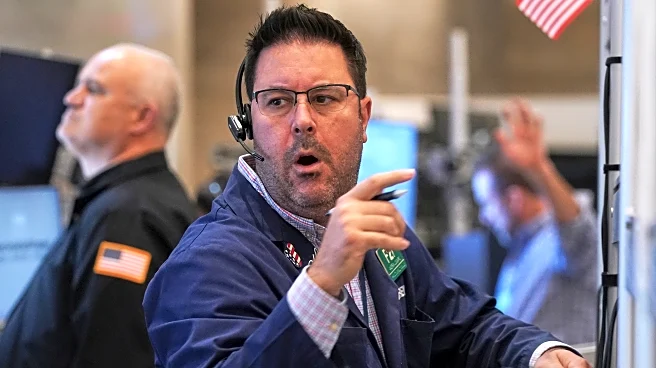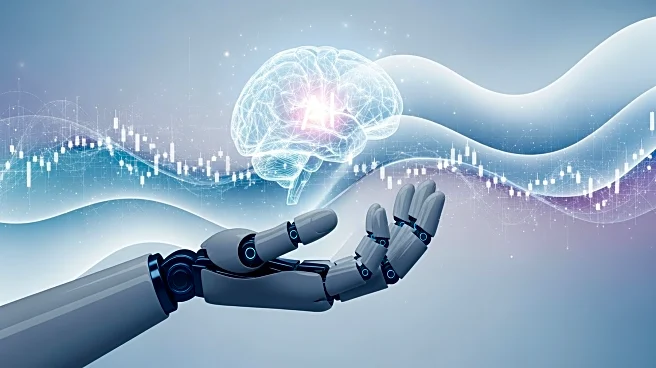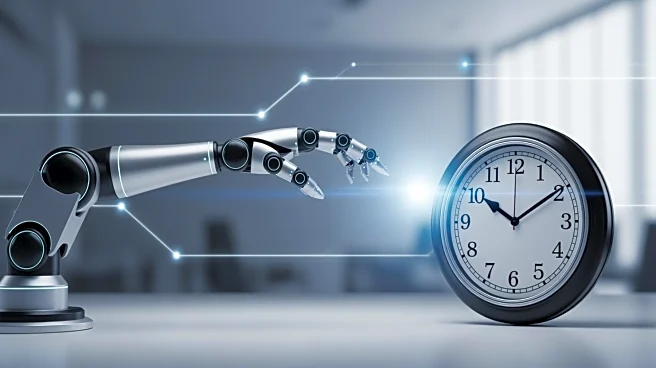What's Happening?
In October 2025, U.S.-based companies announced over 153,000 job cuts, marking the highest October increase in 22 years, according to Challenger, Gray & Christmas. This surge is attributed to the growing
impact of artificial intelligence on the labor market, alongside softening consumer and corporate spending and rising costs. The report highlights that the cumulative job cuts for the first ten months of 2025 have surpassed one million, reflecting a 65% increase compared to the same period in the previous year. The absence of the federal government's October jobs report due to a government shutdown has led to increased reliance on alternative data sources like Challenger's report and ADP's private-sector payroll data, which showed a modest addition of 42,000 jobs in October.
Why It's Important?
The significant rise in job cuts underscores the transformative impact of artificial intelligence on the labor market, reminiscent of the internet's rise in the early 2000s. This development poses challenges for industries adjusting after the pandemic hiring boom, as AI adoption drives efficiency pressures and hiring freezes. The absence of federal employment data complicates the assessment of the labor market's health, affecting policymakers and economic stakeholders. Major companies like Amazon, IBM, and Microsoft have announced substantial layoffs, indicating broader economic challenges. Despite these trends, the Trump administration maintains an optimistic outlook, with Treasury Secretary Scott Bessent asserting that 'jobs are booming' and 'inflation is falling,' although recent data suggests otherwise.
What's Next?
The ongoing government shutdown has delayed key economic data releases, including the October jobs report, GDP figures, and the PCE inflation indicator, which are crucial for Federal Reserve assessments. As AI continues to reshape the labor market, companies may further adjust their workforce strategies, potentially leading to more layoffs or hiring freezes. Economic stakeholders will closely monitor upcoming reports and corporate announcements to gauge the labor market's trajectory. The integration of AI may lead to long-term shifts in employment patterns, prompting discussions on workforce retraining and policy adjustments to address technological disruptions.
Beyond the Headlines
The rise in job cuts due to AI integration raises ethical and cultural questions about the future of work and the need for workforce adaptation. As companies leverage AI for efficiency, the potential displacement of workers highlights the importance of retraining programs and educational initiatives to equip the workforce with new skills. The evolving labor market dynamics may also influence public policy discussions on technology's role in economic growth and employment stability, emphasizing the need for proactive measures to mitigate adverse impacts.













